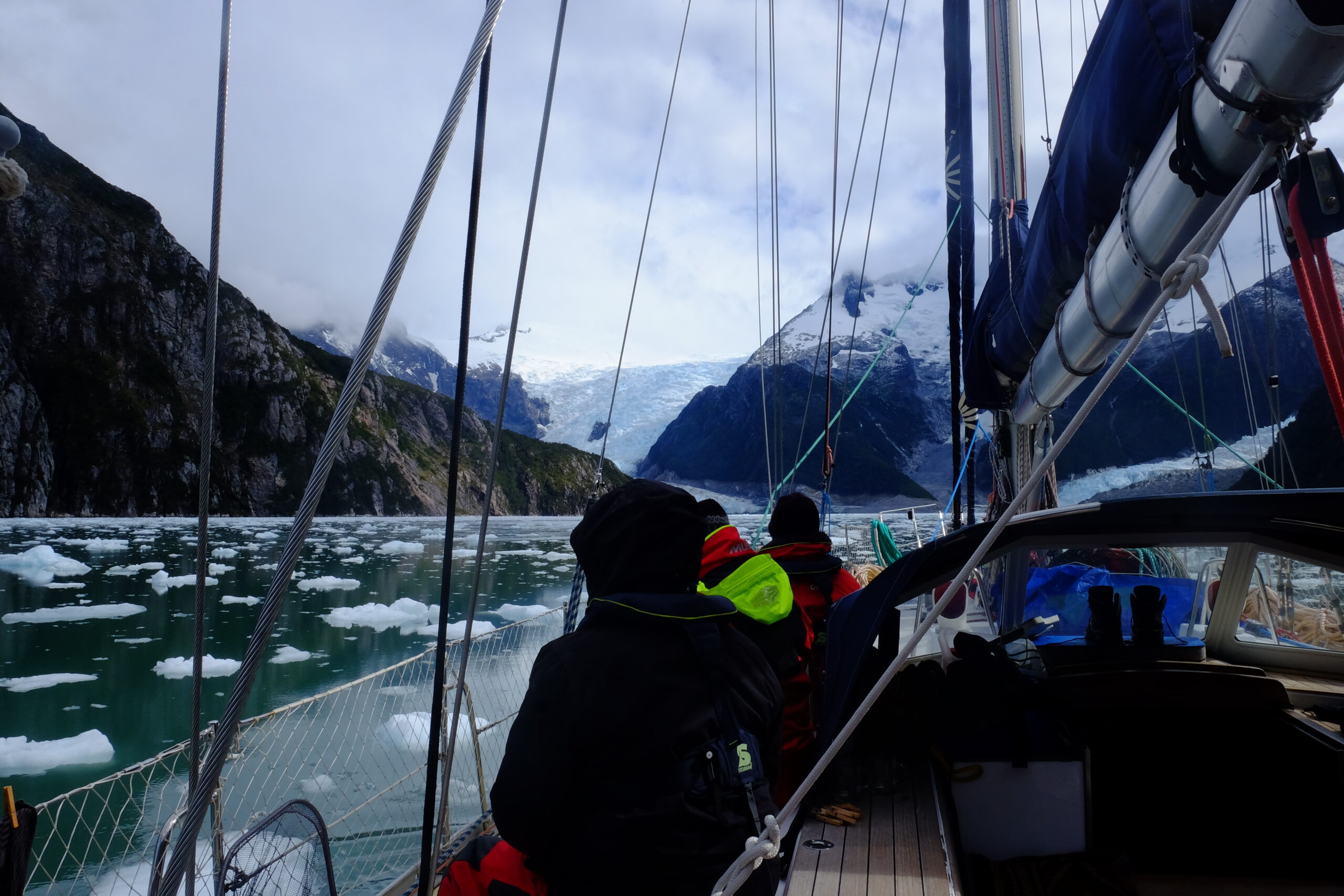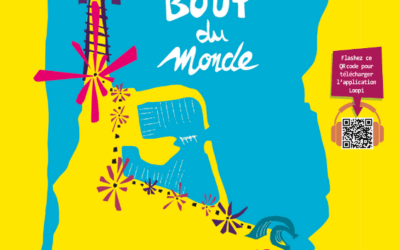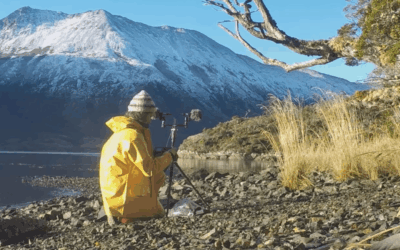[#4 Ireland – Scotland 2024] Scotland : Islay and Jura
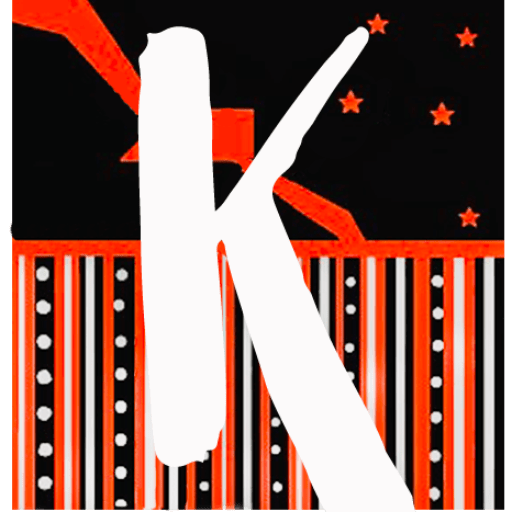
Association Karukinka
Loi 1901 - d'intérêt général
Derniers articles
Suivez nous
After disembarking near the Bruidladdich pier, we left to visit the village of Port Charlotte by taking the coastal path and thus enjoying the colors of the sunset on Loch Indaal, the view of the lighthouse overlooking the Rubh’ An Duin (a little Gaelic: Rubha: promontory; Dun: fort, mound) and Kilchoman Parish Church.
![[#4 Ireland - Scotland 2024] Scotland : Islay and Jura 1 Séjour voilier écosse, Séjour voilier Norvège, Croisière voilier Ecosse, Croisière voilier Norvège, Cap Nord à la voile, Sailing Norway, Sailing Scotland, Blue Water sailing, Stage voile hauturier, stage de voile côtier, sailing hébrides, voilier hébrides, navegar escocia, navegar noruega, navegar por los fiordos, velero escocia, velero noruega, navegar en finnmark, navegar en escocia, navegar en las hebridas, navegar costa oeste escocia, velero islas escocia, navegar islas escocia, sailing scottish islands, naviguer iles écossaises, PortCharlotte 042024](https://karukinka-exploration.com/wp-content/uploads/2024/05/PortCharlotte_042024-1024x683.jpg)
![[#4 Ireland - Scotland 2024] Scotland : Islay and Jura 2 Séjour voilier écosse, Séjour voilier Norvège, Croisière voilier Ecosse, Croisière voilier Norvège, Cap Nord à la voile, Sailing Norway, Sailing Scotland, Blue Water sailing, Stage voile hauturier, stage de voile côtier, sailing hébrides, voilier hébrides, navegar escocia, navegar noruega, navegar por los fiordos, velero escocia, velero noruega, navegar en finnmark, navegar en escocia, navegar en las hebridas, navegar costa oeste escocia, velero islas escocia, navegar islas escocia, sailing scottish islands, naviguer iles écossaises, PortCharlotte 042024 1](https://karukinka-exploration.com/wp-content/uploads/2024/05/PortCharlotte_042024-1-1024x683.jpg)
![[#4 Ireland - Scotland 2024] Scotland : Islay and Jura 3 Séjour voilier écosse, Séjour voilier Norvège, Croisière voilier Ecosse, Croisière voilier Norvège, Cap Nord à la voile, Sailing Norway, Sailing Scotland, Blue Water sailing, Stage voile hauturier, stage de voile côtier, sailing hébrides, voilier hébrides, navegar escocia, navegar noruega, navegar por los fiordos, velero escocia, velero noruega, navegar en finnmark, navegar en escocia, navegar en las hebridas, navegar costa oeste escocia, velero islas escocia, navegar islas escocia, sailing scottish islands, naviguer iles écossaises, PortCharlotte 042024 2](https://karukinka-exploration.com/wp-content/uploads/2024/05/PortCharlotte_042024-2-1024x683.jpg)
![[#4 Ireland - Scotland 2024] Scotland : Islay and Jura 4 Séjour voilier écosse, Séjour voilier Norvège, Croisière voilier Ecosse, Croisière voilier Norvège, Cap Nord à la voile, Sailing Norway, Sailing Scotland, Blue Water sailing, Stage voile hauturier, stage de voile côtier, sailing hébrides, voilier hébrides, navegar escocia, navegar noruega, navegar por los fiordos, velero escocia, velero noruega, navegar en finnmark, navegar en escocia, navegar en las hebridas, navegar costa oeste escocia, velero islas escocia, navegar islas escocia, sailing scottish islands, naviguer iles écossaises, PortCharlotte 042024 3](https://karukinka-exploration.com/wp-content/uploads/2024/05/PortCharlotte_042024-3-1024x683.jpg)
On our return to Bruidladdich, we took a look at the opening hours of the distillery of the same name and producer of Port Charlotte, Bruidladdich and Octomore whiskies. This distillery is one of the nine distilleries present on the island of Islay and we decide to visit it tomorrow at the beginning of the afternoon (In the morning it was also open but the idea of tasting good whiskey morning brought together few amateurs…).
![[#4 Ireland - Scotland 2024] Scotland : Islay and Jura 5 Séjour voilier écosse, Séjour voilier Norvège, Croisière voilier Ecosse, Croisière voilier Norvège, Cap Nord à la voile, Sailing Norway, Sailing Scotland, Blue Water sailing, Stage voile hauturier, stage de voile côtier, sailing hébrides, voilier hébrides, navegar escocia, navegar noruega, navegar por los fiordos, velero escocia, velero noruega, navegar en finnmark, navegar en escocia, navegar en las hebridas, navegar costa oeste escocia, velero islas escocia, navegar islas escocia, sailing scottish islands, naviguer iles écossaises, Bruidladdich 042024](https://karukinka.eu/wp-content/uploads/2024/05/Bruidladdich_042024-1024x683.jpg)
After a quiet morning on board, without swell or wind, it is under a big blue sky that we leave the shore for the famous visit to the Bruidladdich distillery. We went to reception, which also served as a point of sale, and learned that the guided tour only took place in the morning at 10:30 a.m. Our interlocutor suggested that we come back the next day, except that the next day, we planned to leave towards the north coast of Islay… Obviously very disappointed, she sympathized with us when she learned that we came here by sailboat, this large sailboat all alone in this immense loch, and offers to show us around the distillery straight away, asking his colleague to keep the on-board mascot, the Spinning Top, at the counter for the duration of this visit.
![[#4 Ireland - Scotland 2024] Scotland : Islay and Jura 6 Séjour voilier écosse, Séjour voilier Norvège, Croisière voilier Ecosse, Croisière voilier Norvège, Cap Nord à la voile, Sailing Norway, Sailing Scotland, Blue Water sailing, Stage voile hauturier, stage de voile côtier, sailing hébrides, voilier hébrides, navegar escocia, navegar noruega, navegar por los fiordos, velero escocia, velero noruega, navegar en finnmark, navegar en escocia, navegar en las hebridas, navegar costa oeste escocia, velero islas escocia, navegar islas escocia, sailing scottish islands, naviguer iles écossaises, Bruidladdich 1 630x1024 1](https://karukinka-exploration.com/wp-content/uploads/2024/05/Bruidladdich_1-630x1024-1.jpg)
![[#4 Ireland - Scotland 2024] Scotland : Islay and Jura 7 Séjour voilier écosse, Séjour voilier Norvège, Croisière voilier Ecosse, Croisière voilier Norvège, Cap Nord à la voile, Sailing Norway, Sailing Scotland, Blue Water sailing, Stage voile hauturier, stage de voile côtier, sailing hébrides, voilier hébrides, navegar escocia, navegar noruega, navegar por los fiordos, velero escocia, velero noruega, navegar en finnmark, navegar en escocia, navegar en las hebridas, navegar costa oeste escocia, velero islas escocia, navegar islas escocia, sailing scottish islands, naviguer iles écossaises, Bruidladdich 2 980x581 1](https://karukinka-exploration.com/wp-content/uploads/2024/05/Bruidladdich_2-980x581-1.jpg)
![[#4 Ireland - Scotland 2024] Scotland : Islay and Jura 8 Séjour voilier écosse, Séjour voilier Norvège, Croisière voilier Ecosse, Croisière voilier Norvège, Cap Nord à la voile, Sailing Norway, Sailing Scotland, Blue Water sailing, Stage voile hauturier, stage de voile côtier, sailing hébrides, voilier hébrides, navegar escocia, navegar noruega, navegar por los fiordos, velero escocia, velero noruega, navegar en finnmark, navegar en escocia, navegar en las hebridas, navegar costa oeste escocia, velero islas escocia, navegar islas escocia, sailing scottish islands, naviguer iles écossaises, Bruidladdich 3 648x1024 1](https://karukinka-exploration.com/wp-content/uploads/2024/05/Bruidladdich_3-648x1024-1.jpg)
She tells us that this distillery was founded in 1881 and that many of the equipment used to make their whiskeys are still used today. She describes the different stages of manufacturing and the machines used, the origin of the malt (and the partnerships with local producers), makes us feel the evolution of fermentation in several barrels of tens of thousands of liters each… The process is complex and the passion for his profession truly immerses us in a new universe. The large distillation room is almost like a museum, with objects worthy of a dive into the world of Jules Verne. We are completely amazed by the contrast between the mechanical and artisanal processes that we see and the volumes produced: more than 3 million liters of whiskey per year! (and 1 million liters of “Botanist” Gin all going into “Ugly Betty”). And only two people handle all of this at their fingertips to give each whiskey its identity (more or less peated), maintain tradition and boldly create, as their Octomore illustrates, the most peated whiskey in the world (and Lauriane’s favorite!).
![[#4 Ireland - Scotland 2024] Scotland : Islay and Jura 9 Séjour voilier écosse, Séjour voilier Norvège, Croisière voilier Ecosse, Croisière voilier Norvège, Cap Nord à la voile, Sailing Norway, Sailing Scotland, Blue Water sailing, Stage voile hauturier, stage de voile côtier, sailing hébrides, voilier hébrides, navegar escocia, navegar noruega, navegar por los fiordos, velero escocia, velero noruega, navegar en finnmark, navegar en escocia, navegar en las hebridas, navegar costa oeste escocia, velero islas escocia, navegar islas escocia, sailing scottish islands, naviguer iles écossaises, IMG 20240510 WA0008 768x1024 1](https://karukinka-exploration.com/wp-content/uploads/2024/05/IMG-20240510-WA0008-768x1024-1.jpg)
![[#4 Ireland - Scotland 2024] Scotland : Islay and Jura 10 Séjour voilier écosse, Séjour voilier Norvège, Croisière voilier Ecosse, Croisière voilier Norvège, Cap Nord à la voile, Sailing Norway, Sailing Scotland, Blue Water sailing, Stage voile hauturier, stage de voile côtier, sailing hébrides, voilier hébrides, navegar escocia, navegar noruega, navegar por los fiordos, velero escocia, velero noruega, navegar en finnmark, navegar en escocia, navegar en las hebridas, navegar costa oeste escocia, velero islas escocia, navegar islas escocia, sailing scottish islands, naviguer iles écossaises, IMG 20240510 WA0009 768x1024 1](https://karukinka-exploration.com/wp-content/uploads/2024/05/IMG-20240510-WA0009-768x1024-1.jpg)
![[#4 Ireland - Scotland 2024] Scotland : Islay and Jura 11 Séjour voilier écosse, Séjour voilier Norvège, Croisière voilier Ecosse, Croisière voilier Norvège, Cap Nord à la voile, Sailing Norway, Sailing Scotland, Blue Water sailing, Stage voile hauturier, stage de voile côtier, sailing hébrides, voilier hébrides, navegar escocia, navegar noruega, navegar por los fiordos, velero escocia, velero noruega, navegar en finnmark, navegar en escocia, navegar en las hebridas, navegar costa oeste escocia, velero islas escocia, navegar islas escocia, sailing scottish islands, naviguer iles écossaises, IMG 20240510 WA0002 768x1024 1](https://karukinka-exploration.com/wp-content/uploads/2024/05/IMG-20240510-WA0002-768x1024-1.jpg)
![[#4 Ireland - Scotland 2024] Scotland : Islay and Jura 12 Séjour voilier écosse, Séjour voilier Norvège, Croisière voilier Ecosse, Croisière voilier Norvège, Cap Nord à la voile, Sailing Norway, Sailing Scotland, Blue Water sailing, Stage voile hauturier, stage de voile côtier, sailing hébrides, voilier hébrides, navegar escocia, navegar noruega, navegar por los fiordos, velero escocia, velero noruega, navegar en finnmark, navegar en escocia, navegar en las hebridas, navegar costa oeste escocia, velero islas escocia, navegar islas escocia, sailing scottish islands, naviguer iles écossaises, IMG 20240510 WA0006 768x1024 1](https://karukinka-exploration.com/wp-content/uploads/2024/05/IMG-20240510-WA0006-768x1024-1.jpg)
![[#4 Ireland - Scotland 2024] Scotland : Islay and Jura 13 Séjour voilier écosse, Séjour voilier Norvège, Croisière voilier Ecosse, Croisière voilier Norvège, Cap Nord à la voile, Sailing Norway, Sailing Scotland, Blue Water sailing, Stage voile hauturier, stage de voile côtier, sailing hébrides, voilier hébrides, navegar escocia, navegar noruega, navegar por los fiordos, velero escocia, velero noruega, navegar en finnmark, navegar en escocia, navegar en las hebridas, navegar costa oeste escocia, velero islas escocia, navegar islas escocia, sailing scottish islands, naviguer iles écossaises, IMG 20240510 WA0011 980x735 1](https://karukinka-exploration.com/wp-content/uploads/2024/05/IMG-20240510-WA0011-980x735-1.jpg)
![[#4 Ireland - Scotland 2024] Scotland : Islay and Jura 14 Séjour voilier écosse, Séjour voilier Norvège, Croisière voilier Ecosse, Croisière voilier Norvège, Cap Nord à la voile, Sailing Norway, Sailing Scotland, Blue Water sailing, Stage voile hauturier, stage de voile côtier, sailing hébrides, voilier hébrides, navegar escocia, navegar noruega, navegar por los fiordos, velero escocia, velero noruega, navegar en finnmark, navegar en escocia, navegar en las hebridas, navegar costa oeste escocia, velero islas escocia, navegar islas escocia, sailing scottish islands, naviguer iles écossaises, IMG 20240510 WA0012 980x735 1](https://karukinka-exploration.com/wp-content/uploads/2024/05/IMG-20240510-WA0012-980x735-1.jpg)
![[#4 Ireland - Scotland 2024] Scotland : Islay and Jura 15 Séjour voilier écosse, Séjour voilier Norvège, Croisière voilier Ecosse, Croisière voilier Norvège, Cap Nord à la voile, Sailing Norway, Sailing Scotland, Blue Water sailing, Stage voile hauturier, stage de voile côtier, sailing hébrides, voilier hébrides, navegar escocia, navegar noruega, navegar por los fiordos, velero escocia, velero noruega, navegar en finnmark, navegar en escocia, navegar en las hebridas, navegar costa oeste escocia, velero islas escocia, navegar islas escocia, sailing scottish islands, naviguer iles écossaises, IMG 20240503 WA0008 768x1024 1](https://karukinka-exploration.com/wp-content/uploads/2024/05/IMG-20240503-WA0008-768x1024-1.jpg)
![[#4 Ireland - Scotland 2024] Scotland : Islay and Jura 16 Séjour voilier écosse, Séjour voilier Norvège, Croisière voilier Ecosse, Croisière voilier Norvège, Cap Nord à la voile, Sailing Norway, Sailing Scotland, Blue Water sailing, Stage voile hauturier, stage de voile côtier, sailing hébrides, voilier hébrides, navegar escocia, navegar noruega, navegar por los fiordos, velero escocia, velero noruega, navegar en finnmark, navegar en escocia, navegar en las hebridas, navegar costa oeste escocia, velero islas escocia, navegar islas escocia, sailing scottish islands, naviguer iles écossaises, IMG 20240510 WA0025 768x1024 1](https://karukinka-exploration.com/wp-content/uploads/2024/05/IMG-20240510-WA0025-768x1024-1.jpg)
![[#4 Ireland - Scotland 2024] Scotland : Islay and Jura 17 Séjour voilier écosse, Séjour voilier Norvège, Croisière voilier Ecosse, Croisière voilier Norvège, Cap Nord à la voile, Sailing Norway, Sailing Scotland, Blue Water sailing, Stage voile hauturier, stage de voile côtier, sailing hébrides, voilier hébrides, navegar escocia, navegar noruega, navegar por los fiordos, velero escocia, velero noruega, navegar en finnmark, navegar en escocia, navegar en las hebridas, navegar costa oeste escocia, velero islas escocia, navegar islas escocia, sailing scottish islands, naviguer iles écossaises, IMG 20240510 WA0021 768x1024 1](https://karukinka-exploration.com/wp-content/uploads/2024/05/IMG-20240510-WA0021-768x1024-1.jpg)
![[#4 Ireland - Scotland 2024] Scotland : Islay and Jura 18 Séjour voilier écosse, Séjour voilier Norvège, Croisière voilier Ecosse, Croisière voilier Norvège, Cap Nord à la voile, Sailing Norway, Sailing Scotland, Blue Water sailing, Stage voile hauturier, stage de voile côtier, sailing hébrides, voilier hébrides, navegar escocia, navegar noruega, navegar por los fiordos, velero escocia, velero noruega, navegar en finnmark, navegar en escocia, navegar en las hebridas, navegar costa oeste escocia, velero islas escocia, navegar islas escocia, sailing scottish islands, naviguer iles écossaises, IMG 20240503 WA0036 768x1024 1](https://karukinka-exploration.com/wp-content/uploads/2024/05/IMG-20240503-WA0036-768x1024-1.jpg)
![[#4 Ireland - Scotland 2024] Scotland : Islay and Jura 19 Séjour voilier écosse, Séjour voilier Norvège, Croisière voilier Ecosse, Croisière voilier Norvège, Cap Nord à la voile, Sailing Norway, Sailing Scotland, Blue Water sailing, Stage voile hauturier, stage de voile côtier, sailing hébrides, voilier hébrides, navegar escocia, navegar noruega, navegar por los fiordos, velero escocia, velero noruega, navegar en finnmark, navegar en escocia, navegar en las hebridas, navegar costa oeste escocia, velero islas escocia, navegar islas escocia, sailing scottish islands, naviguer iles écossaises, IMG 20240510 WA0023 768x1024 1](https://karukinka-exploration.com/wp-content/uploads/2024/05/IMG-20240510-WA0023-768x1024-1.jpg)
![[#4 Ireland - Scotland 2024] Scotland : Islay and Jura 20 Séjour voilier écosse, Séjour voilier Norvège, Croisière voilier Ecosse, Croisière voilier Norvège, Cap Nord à la voile, Sailing Norway, Sailing Scotland, Blue Water sailing, Stage voile hauturier, stage de voile côtier, sailing hébrides, voilier hébrides, navegar escocia, navegar noruega, navegar por los fiordos, velero escocia, velero noruega, navegar en finnmark, navegar en escocia, navegar en las hebridas, navegar costa oeste escocia, velero islas escocia, navegar islas escocia, sailing scottish islands, naviguer iles écossaises, IMG 20240510 WA0016 768x1024 1](https://karukinka-exploration.com/wp-content/uploads/2024/05/IMG-20240510-WA0016-768x1024-1.jpg)
![[#4 Ireland - Scotland 2024] Scotland : Islay and Jura 21 Séjour voilier écosse, Séjour voilier Norvège, Croisière voilier Ecosse, Croisière voilier Norvège, Cap Nord à la voile, Sailing Norway, Sailing Scotland, Blue Water sailing, Stage voile hauturier, stage de voile côtier, sailing hébrides, voilier hébrides, navegar escocia, navegar noruega, navegar por los fiordos, velero escocia, velero noruega, navegar en finnmark, navegar en escocia, navegar en las hebridas, navegar costa oeste escocia, velero islas escocia, navegar islas escocia, sailing scottish islands, naviguer iles écossaises, IMG 20240503 WA0033 768x1024 1](https://karukinka-exploration.com/wp-content/uploads/2024/05/IMG-20240503-WA0033-768x1024-1.jpg)
![[#4 Ireland - Scotland 2024] Scotland : Islay and Jura 22 Séjour voilier écosse, Séjour voilier Norvège, Croisière voilier Ecosse, Croisière voilier Norvège, Cap Nord à la voile, Sailing Norway, Sailing Scotland, Blue Water sailing, Stage voile hauturier, stage de voile côtier, sailing hébrides, voilier hébrides, navegar escocia, navegar noruega, navegar por los fiordos, velero escocia, velero noruega, navegar en finnmark, navegar en escocia, navegar en las hebridas, navegar costa oeste escocia, velero islas escocia, navegar islas escocia, sailing scottish islands, naviguer iles écossaises, IMG 20240503 WA0010 768x1024 1](https://karukinka-exploration.com/wp-content/uploads/2024/05/IMG-20240503-WA0010-768x1024-1.jpg)
![[#4 Ireland - Scotland 2024] Scotland : Islay and Jura 23 Séjour voilier écosse, Séjour voilier Norvège, Croisière voilier Ecosse, Croisière voilier Norvège, Cap Nord à la voile, Sailing Norway, Sailing Scotland, Blue Water sailing, Stage voile hauturier, stage de voile côtier, sailing hébrides, voilier hébrides, navegar escocia, navegar noruega, navegar por los fiordos, velero escocia, velero noruega, navegar en finnmark, navegar en escocia, navegar en las hebridas, navegar costa oeste escocia, velero islas escocia, navegar islas escocia, sailing scottish islands, naviguer iles écossaises, IMG 20240510 WA0035 980x551 1](https://karukinka-exploration.com/wp-content/uploads/2024/05/IMG-20240510-WA0035-980x551-1.jpg)
At the end of this visit, we find La Toupie at the counter accompanied by its new admirers, and begin the tasting stage. The choice is made to taste what stands out the most from the ordinary: the four Octomore (14.1, 14.2, 14.3 and 14.4). Ultimately, all very different, everyone will find the one they like, sometimes vanilla, sometimes reminiscent of leather and the smell of smoke.
![[#4 Ireland - Scotland 2024] Scotland : Islay and Jura 24 Séjour voilier écosse, Séjour voilier Norvège, Croisière voilier Ecosse, Croisière voilier Norvège, Cap Nord à la voile, Sailing Norway, Sailing Scotland, Blue Water sailing, Stage voile hauturier, stage de voile côtier, sailing hébrides, voilier hébrides, navegar escocia, navegar noruega, navegar por los fiordos, velero escocia, velero noruega, navegar en finnmark, navegar en escocia, navegar en las hebridas, navegar costa oeste escocia, velero islas escocia, navegar islas escocia, sailing scottish islands, naviguer iles écossaises, IMG 20240503 WA0002](https://karukinka.eu/wp-content/uploads/2024/05/IMG-20240503-WA0002-1024x768.jpg)
After a final walk towards the bottom of the loch, we return on board, prepare dinner and the next day’s navigation.
The following night was a little rough with a small swell arriving from the south, before the wind from the same direction expected at midday. We take a weather update and prepare to weigh anchor. The forecast is good, south to southeast wind 4 to 6 and slightly rough to rough seas in our area (MALIN). We leave at the end of the morning to take advantage of the favorable tidal conditions to pass the An Coire islet with the Orsay island in the background overlooked by the Rhinns of Islay lighthouse and the villages of Port Wemyss and Portnahaven. We are moving at 5 knots, with staysail and mizzen. We bypass the current and eddy zone to avoid staying too long in cross seas. It’s raining and the wind is picking up little by little, giving us this “good” visibility at times…
![[#4 Ireland - Scotland 2024] Scotland : Islay and Jura 25 Séjour voilier écosse, Séjour voilier Norvège, Croisière voilier Ecosse, Croisière voilier Norvège, Cap Nord à la voile, Sailing Norway, Sailing Scotland, Blue Water sailing, Stage voile hauturier, stage de voile côtier, sailing hébrides, voilier hébrides, navegar escocia, navegar noruega, navegar por los fiordos, velero escocia, velero noruega, navegar en finnmark, navegar en escocia, navegar en las hebridas, navegar costa oeste escocia, velero islas escocia, navegar islas escocia, sailing scottish islands, naviguer iles écossaises, N Islay Jura 042024 39](https://karukinka.eu/wp-content/uploads/2024/05/N-Islay_Jura_042024-39-1024x683.jpg)
After passing the point we gybe to go up the west of the island, in more comfortable conditions and a sky which clears at times, allowing us, among other things, to observe the white sand beach of Machir bay.
At the end of the afternoon we pass between Colonsay in the north and Ardnave Point, Nave Island and the Balach Rocks in the south, under mizzen, staysail and yankee, in calm seas and at 7 knots with 20 knots of wind: what a joy! The cliffs of northern Islay are covered and uncovered, revealing rainbows and then, gradually, the Rubha a’Mhail lighthouse. The latter marks the northern entrance to the Sound of Islay, separating this island from its even wilder neighbor: Jura.
![[#4 Ireland - Scotland 2024] Scotland : Islay and Jura 26 Séjour voilier écosse, Séjour voilier Norvège, Croisière voilier Ecosse, Croisière voilier Norvège, Cap Nord à la voile, Sailing Norway, Sailing Scotland, Blue Water sailing, Stage voile hauturier, stage de voile côtier, sailing hébrides, voilier hébrides, navegar escocia, navegar noruega, navegar por los fiordos, velero escocia, velero noruega, navegar en finnmark, navegar en escocia, navegar en las hebridas, navegar costa oeste escocia, velero islas escocia, navegar islas escocia, sailing scottish islands, naviguer iles écossaises, N Islay Jura 042024 32](https://karukinka-exploration.com/wp-content/uploads/2024/05/N-Islay_Jura_042024-32-1024x683.jpg)
![[#4 Ireland - Scotland 2024] Scotland : Islay and Jura 27 Séjour voilier écosse, Séjour voilier Norvège, Croisière voilier Ecosse, Croisière voilier Norvège, Cap Nord à la voile, Sailing Norway, Sailing Scotland, Blue Water sailing, Stage voile hauturier, stage de voile côtier, sailing hébrides, voilier hébrides, navegar escocia, navegar noruega, navegar por los fiordos, velero escocia, velero noruega, navegar en finnmark, navegar en escocia, navegar en las hebridas, navegar costa oeste escocia, velero islas escocia, navegar islas escocia, sailing scottish islands, naviguer iles écossaises, N Islay Jura 042024 37](https://karukinka-exploration.com/wp-content/uploads/2024/05/N-Islay_Jura_042024-37-1024x683.jpg)
![[#4 Ireland - Scotland 2024] Scotland : Islay and Jura 28 Séjour voilier écosse, Séjour voilier Norvège, Croisière voilier Ecosse, Croisière voilier Norvège, Cap Nord à la voile, Sailing Norway, Sailing Scotland, Blue Water sailing, Stage voile hauturier, stage de voile côtier, sailing hébrides, voilier hébrides, navegar escocia, navegar noruega, navegar por los fiordos, velero escocia, velero noruega, navegar en finnmark, navegar en escocia, navegar en las hebridas, navegar costa oeste escocia, velero islas escocia, navegar islas escocia, sailing scottish islands, naviguer iles écossaises, N Islay Jura 042024 28](https://karukinka-exploration.com/wp-content/uploads/2024/05/N-Islay_Jura_042024-28-1024x683.jpg)
![[#4 Ireland - Scotland 2024] Scotland : Islay and Jura 29 Séjour voilier écosse, Séjour voilier Norvège, Croisière voilier Ecosse, Croisière voilier Norvège, Cap Nord à la voile, Sailing Norway, Sailing Scotland, Blue Water sailing, Stage voile hauturier, stage de voile côtier, sailing hébrides, voilier hébrides, navegar escocia, navegar noruega, navegar por los fiordos, velero escocia, velero noruega, navegar en finnmark, navegar en escocia, navegar en las hebridas, navegar costa oeste escocia, velero islas escocia, navegar islas escocia, sailing scottish islands, naviguer iles écossaises, N Islay Jura 042024 29 1](https://karukinka-exploration.com/wp-content/uploads/2024/05/N-Islay_Jura_042024-29-1-1024x683.jpg)
We keep heading east, and, approaching the entrance channel, furl and lower the sails to reach a little corner of paradise whose approach proves demanding, with several alignments (rocks painted white ) to be respected in order to make a (narrow) passage between the numerous reefs.
![[#4 Ireland - Scotland 2024] Scotland : Islay and Jura 30 Séjour voilier écosse, Séjour voilier Norvège, Croisière voilier Ecosse, Croisière voilier Norvège, Cap Nord à la voile, Sailing Norway, Sailing Scotland, Blue Water sailing, Stage voile hauturier, stage de voile côtier, sailing hébrides, voilier hébrides, navegar escocia, navegar noruega, navegar por los fiordos, velero escocia, velero noruega, navegar en finnmark, navegar en escocia, navegar en las hebridas, navegar costa oeste escocia, velero islas escocia, navegar islas escocia, sailing scottish islands, naviguer iles écossaises, N Islay Jura 042024 22](https://karukinka.eu/wp-content/uploads/2024/05/N-Islay_Jura_042024-22-1024x683.jpg)
It is in an environment illustrating the notion of wildness and immensity that we drop anchor, protected from the bad weather expected the next day, and which gives us the opportunity to leave navigation aside to go hiking, visit two bocies (refuges) and carry out the first inaugural flight of the association’s drone, the result of which is:
The rest this weekend with the program of the ascent of Jura, the crossing of Corryvreckan and the return, twenty years later, of Damien to Loch Melfort!
Views: 6

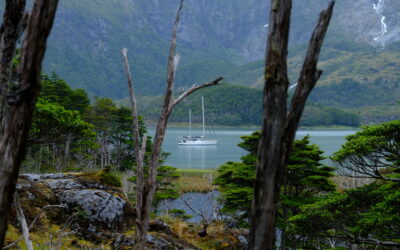
![[Heading South #13] From Buenos Aires (Argentina) to Puerto Williams (Chile) – Final Part](https://karukinka-exploration.com/wp-content/uploads/2025/07/IMG-20250124-WA0017-1-400x250.jpg)
![[#8 – Ireland–Scotland 2024] from Loch Buie to the sacred Isle of Iona](https://karukinka-exploration.com/wp-content/uploads/2024/07/Iona_LL-400x250.jpg)
